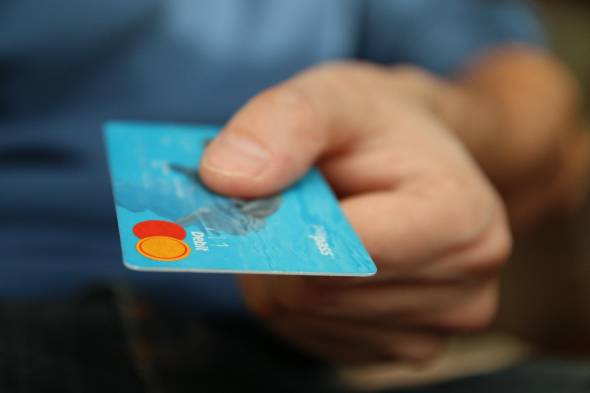Debt is more than just a financial burden; it can become a continuous strain on one’s life, affecting mental well-being and long-term goals.
With the complexities surrounding interest rates, fees, and various types of loans, managing debt can seem overwhelming.
This guide aims to demystify the process of paying off debt, providing practical steps to regain control of one’s financial life.
Whether dealing with credit card bills or struggling with personal loans, these strategies are designed to help.

Understanding Your Debt
To begin the journey to financial freedom, one must first understand the nature of their debt.
It’s crucial to gather information on all existing obligations, including credit cards, mortgages, student loans, and more.
Knowing the interest rates and fees associated with each debt will help to form a clear picture of the overall financial situation.
For instance, a young professional juggling student loans and credit card bills can prioritize the debts with the highest interest to save money in the long run.
Creating a Personalized Debt Payoff Plan
Creating a personalized debt payoff plan requires a realistic budget tailored to income and expenses.
There are different strategies, such as the debt snowball and debt avalanche methods.
While the snowball approach focuses on paying off smaller debts first to gain momentum, the avalanche method targets the debts with the highest interest rates.
Consider a family that has used the debt avalanche to tackle a high-interest car loan while managing a lower interest home mortgage effectively.
Carefully choosing the right strategy makes the journey to debt freedom more efficient and manageable.
Implementing the Plan
Implementing a debt payoff plan involves consistent tracking and utilization of tools to stay on course.
There are numerous apps and management tools designed to help in this process.
By using technology or simple spreadsheets, it becomes easier to monitor progress and handle unexpected expenses.
For instance, a single parent successfully utilizing a budgeting app to track monthly payments and set aside an emergency fund represents the effectiveness of diligent planning.

It’s worth emphasizing that the process of implementing a debt payoff plan requires both discipline and flexibility.
Here are some key components to consider:
-
Monitoring Regularly: Regular check-ins on the progress can keep the plan on track. Bi-weekly or monthly assessments may help in making necessary adjustments.
-
Creating an Emergency Fund: Having a small savings cushion for unexpected expenses ensures that these don’t derail the plan.
-
Being Patient and Persistent: Debt payoff doesn’t happen overnight. Continuous effort and patience are vital.
-
Learning from Others: Engaging with community forums or support groups can provide insights and encouragement from those who have successfully managed their debts.
Through thoughtful planning, the right tools, and a willingness to adapt, implementing a personalized debt payoff plan becomes an achievable task.
The integration of these elements can turn the seemingly insurmountable mountain of debt into a manageable hill, paving the way to financial freedom.
Alternative Debt Solutions
Sometimes, traditional methods might not be enough.
Options like debt consolidation or professional guidance through a credit counselor might be necessary.
These methods can simplify the process and provide additional support.
For example, a couple overwhelmed with multiple credit card debts might explore the Louisiana debt relief program, combining their obligations into a single, manageable payment.
Even bankruptcy might be a viable solution for some, though it should be considered with caution and professional advice.
Managing Credit
Managing credit is an essential aspect of paying off debt. Understanding how debt affects credit scores and taking steps to enhance credit during the process of debt reduction is vital.
By paying bills on time and reducing overall debt, credit scores can improve.
A retired individual working meticulously to enhance his credit score after paying off medical bills demonstrates the importance of credit management in the overall financial well-being.
Emotional Aspects of Debt
The psychological impact of debt should not be underestimated.
The journey to becoming debt-free can be long and arduous, and maintaining motivation is key.
Creating small milestones and celebrating achievements can make the process more enjoyable.
The story of a young entrepreneur who managed to pay off her business loans while maintaining mental well-being through support groups and mindfulness practices underscores the importance of addressing emotional aspects.
The journey to becoming debt-free is not only a matter of numbers but also a deeply emotional process.
Recognizing and managing the feelings associated with debt can significantly contribute to success.
Here are some vital considerations:
-
Stress and Anxiety: Debt often leads to stress and anxiety, which can affect daily life. Acknowledging these emotions and seeking professional help if needed is crucial.
-
Motivation and Rewards: Setting achievable goals and rewarding oneself upon reaching them helps maintain motivation.
-
Support Systems: Friends, family, or support groups can be instrumental in providing encouragement.
-
Mental Health Awareness: Being mindful of one’s mental well-being and taking measures such as meditation, exercise, or counseling can make the process more manageable.
Through creative coping strategies and understanding the emotional implications of debt, individuals can forge a path that not only leads to financial freedom but also contributes positively to their overall well-being.
Conclusion
Paying off debt is more than a financial endeavor; it’s a holistic process that involves understanding one’s obligations, creating a personalized plan, implementing it diligently, considering alternative solutions if needed, managing credit, and recognizing the emotional aspects of the journey.
From the young professional to the retired individual, these steps can be applied universally, offering a pathway to financial stability and peace of mind.
Whether utilizing the Louisiana debt relief program or simply tracking progress through a mobile app, the journey to being debt-free is achievable with the right tools and determination.